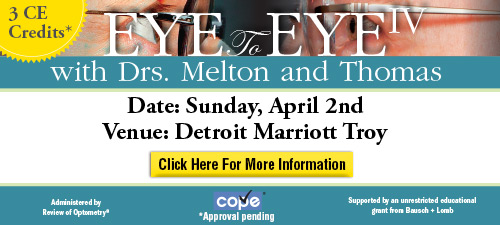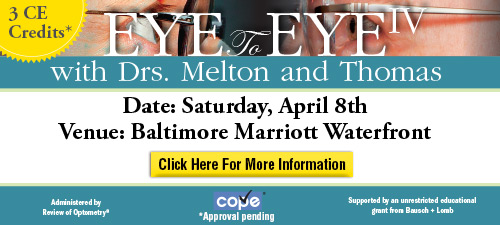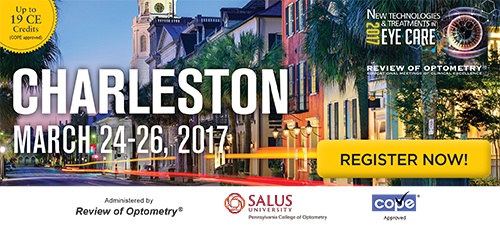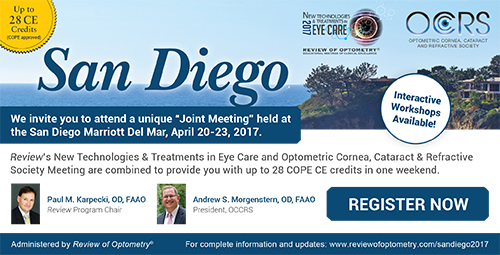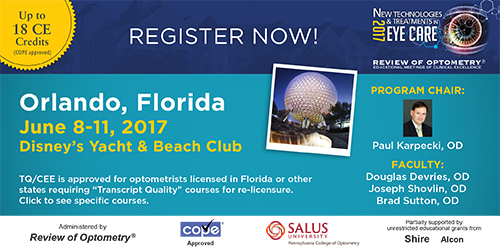
A
weekly e-journal by Art Epstein, OD, FAAO
Off the Cuff: Ways to Fix Our Healthcare Mess
Thank you for the many emails. I did try to respond to all, but if I inadvertently missed you, my apologies. The general consensus was frustration with our broken system. Many offered personal experiences while others offered sage advice. All of this got me to thinking. I wanted to share some ideas that I believe our organizations would be wise to explore and advocate. The first is an adaptation of a brilliant idea shared by my good friend and colleague Ray Brill. Ray suggested a clever way to apply existing technology to better control costs and access to care. Essentially, he described a universal health care card that would contain vital fixed patient insurance data. The card could also be coded to immediately access patient demographic and health history from a secure portal that would be universal for all insurers. Used like a credit card, just running it would permit instant checking of benefits and copays, and allow immediate approval for examinations, procedures and medications. This would completely and instantaneously automate insurance claims and would reduce administrative costs exponentially. It would also streamline office flow and dramatically decrease the cost of providing care. Second on my list would be to immediately implement federal licensure for all professions, including optometry. In an age of rapid technological advances, increasing personal mobility and expansion in telemedicine, failure to nationalize licensure is just poor health care policy. Federal licensure should be set at the most advanced level currently held by each profession. While medicine has long railed against expansion by “secondary providers,” escalating shortages of MDs and disruptive technology will force these changes anyway. It’s time organized medicine put the needs of patients ahead of its own economic agenda. Failing that, it will be done for them at even greater disadvantage. Mark my words.
|
|||||

|
||
| Effect of Pterygium and Pterygium Surgery on Corneal Biomechanics | ||||
This study considered 68 eyes (from 34 patients with a mean age of 21.2 years ± 7.1 years) with unilateral nasal and primary pterygium (horizontal length <4 mm), having undergone pterygium excision and conjunctival autografting to evaluate the effect of pterygium and pterygium surgery on corneal biomechanics by ocular response analyzer (ORA, Reichert). Pterygium length and area were measured from a photograph of the anterior segment using Image J program. ORA measurements were obtained before surgery and after the first month of the surgery. The measurements of the eyes with pterygium and healthy eyes were compared to evaluate the effect of pterygium. Similarly, measurements obtained before and after surgery were compared to evaluate the effect of pterygium surgery on corneal biomechanics. The correlation of the ORA measurements with the pterygium area was evaluated.
Mean pterygium horizontal length and area were 3.31mm ± 1.43mm and 6.82mm2 ±2.17mm2, respectively. There was no statistically significant difference between the eyes with and without pterygium in corneal hysteresis (CH), corneal resistance factor (CRF), corneal-compensated intraocular pressure (IOPcc) and Goldmann-correlated IOP (IOPg). All preoperative parameters decreased after surgery; however, none were statistically significant. There were no correlations between pterygium area and ORA measurements. Pterygium <4 mm and its surgical excision did not affect corneal biomechanics. Researchers suggested that this finding may be taken into account when cornea biomechanics, mainly intraocular pressure measurements, are at issue. |
||||
SOURCE: Koç M, Yavrum F, Uzel MM, et al. the effect of pterygium and pterygium surgery on corneal biomechanics. Semin Ophthalmol. 2017;13:1-5. |
||||
|
|||
| Corneal Endothelium & Central Corneal Thickness Changes in Diabetes | ||||
This study was conducted to compare the corneal endothelial cell density (ECD), morphological features and central corneal thickness (CCT) in type 2 diabetes mellitus (DM) with age-matched, nondiabetic control subjects using the EM-3000 Specular Microscope. This was a prospective, hospital-based, nonrandomized, case-control, observational and quantitative study. The study included 57 patients (57 eyes) with type 2 DM and 45 control (nondiabetic) subjects (45 eyes). The corneal endothelial structure and CCT were examined in all eyes by noncontact specular microscopy using EM-3000 Specular Microscope. The endothelial structure was studied for ECD, coefficient of variation of cell area (CV) and percentage of hexagonal cells. The study included 36 eyes without diabetic retinopathy (DR), 14 eyes with nonproliferative DR and 7 eyes with proliferative DR. There were 26 eyes with a duration of ≤10 years and 31 eyes with a duration of >10 years. Also, there were 24 eyes with HbA1c ≤7.5% and 33 eyes with HbA1c >7.5%. ECD was significantly lower in the diabetic cornea than in control group. CV was higher in diabetic cornea. The diabetic cornea group had a lower percentage of hexagonal cells than the control group, but the difference was not statistically significant. Also, the diabetic cornea was thicker than in control group, but not statistically significant. This study documented that type 2 DM caused a significant reduction of ECD and increased CV (polymegathism). Also, the diabetic cornea experienced increased CCT and was found to have a lower percentage of hexagonal cells than normal subjects, but without statistical significance. |
||||
SOURCE: El-Agamy A, Alsubaie S. Corneal endothelium and central corneal thickness changes in type 2 diabetes mellitus. Clin Ophthalmol. 2017;11:481-86. |
||||
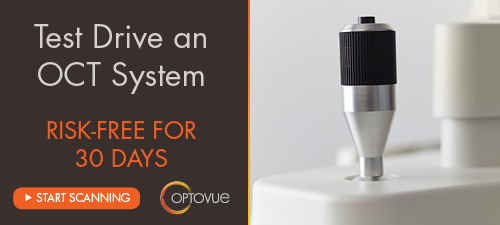 |
||
| Ocular Surface Squamous Neoplasia Associated with Atopic Keratoconjunctivitis | ||||
Case one involved a 73-year-old male with atopic eczema and severe AKC who developed a limbal lesion suspicious for ocular surface squamous neoplasia (OSSN). Slit-lamp examination revealed a new sessile lesion in the temporal limbal region of the left eye. The lesion was treated with excisional biopsy and cryotherapy. Topical therapy with mitomycin C, topical interferon alpha 2b and topical 5-fluorouracil provided only partial control. Exenteration was eventually needed. Case two involved a 53-year-old male with a history of severe AKC and eczema. Computed tomography imaging showed an infiltrative mass of the right orbit. Incisional biopsies confirmed conjunctival squamous cell carcinoma of both sides (invasive in the right eye, in situ in the left eye). Exenteration was needed for control of invasive carcinoma in the right eye. Squamous cell carcinoma was treated without success in spite of surgical excision and aggressive treatment with multiple topical agents and multiple applications of cryotherapy. Orbital exenteration was needed in both cases. Researchers determined that chronic inflammation associated with AKC might be a risk factor for the development of bilateral, diffuse, invasive and recurrent OSSN, potentially requiring exenteration. |
||||
SOURCE: Shah A, Espana EM, Singh AD. Ocular surface squamous neoplasia associated with atopic keratoconjunctivitis. Ocul Oncol Pathol. 2017;3(1):22-27. |
||||
|
|||
| News & Notes | |||||||||
AOA Calls for System-wide Action to Make Eye Health & Vision Care a National Priority
|
|||||||||
| Essilor Introduces Compact High-Volume Edging System Essilor Instruments announced the release of the Pro-ETM 600 edging system. Pro-E 600 incorporates faster processes designed to increase productivity that is essential for high-volume labs. The wide range of finishing options are delivered with a high level of accuracy, and aim to maximize efficiency and turn time. Designed to be reliable, compact, cost-effective and easy to integrate into any lab, Pro-E 600 offers an innovative and versatile solution. Learn more.
|
|||||||||
| IDOC Hosts National Optometry Conference IDOC, a privately held alliance of independent U.S. optometrists, hosted more than 400 independent optometrists, vendor partners and more during its national conference at the Gaylord Palms in Orlando, Fla., from Feb. 9 to 11. Highlights of the conference included COPE-accredited practice management courses from Dr. Mark Wright and medical CE sessions from Dr. John Rumpakis. IDOC will host a second national meeting in Denver, from October 25 to 28. Read more. |
|||||||||
|
Optometric Physician™ (OP) newsletter is owned and published by Dr. Arthur Epstein. It is distributed by the Review Group, a Division of Jobson Medical Information LLC (JMI), 11 Campus Boulevard, Newtown Square, PA 19073. HOW TO ADVERTISE |




